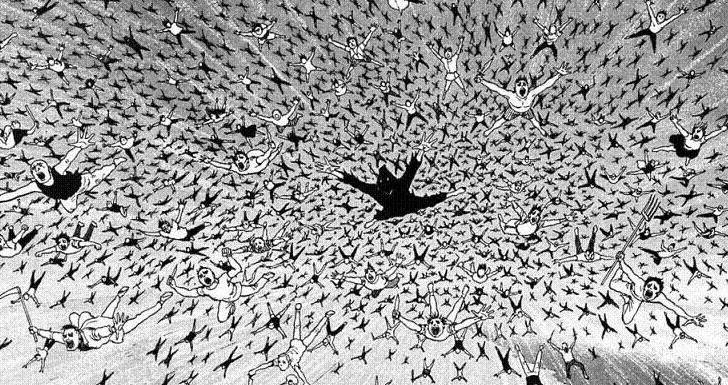I have always thought Ebola could be promising – although not in its classical form. The trouble with Ebola Zaire is that it’s too good at killing – subjects typically end up bedridden and dead before they’ve spread the plague too far. Difficult to get exponential growth (ie, an epidemic), especially in a first world country.
(By the way, I should mention that Ebola Zaire will probably never become airborne, due to complex reasons relating to its structure. The airborne variant, Reston, is not dangerous to humans.)
For a truly weaponised version of Ebola, I refer to the work of Serguei Popov, a Russian molecular biologist who has done more to advance the cause of pathogenic bioweapons than any man alive. His main work (much of which is now public record, thanks to Mr Gorbachev) was genetically engineered pathogens that would use the body’s immune system against it – causing brain damage and paralysis.
“With the myelin toxin, the infection might initially show symptoms like those of typical plague or mild pneumonia,” Dr. Popov writes. The hybrid genes that he and his team engineered would themselves be spliced into some more innocuous bacterium like Legionella pneumophila, the bacterium responsible for Legionnaire’s disease. Thus, Dr. Popov continued, victims would first show pneumonia’s typical symptoms. “So the person would be treated for those and feel healthy. Then the disease’s second wave would come two weeks later, and it would be devastating.”
This is essentially a “glitch in the Matrix” type of plague that exploits the way the body responds to to pathogens. Two things are especially brilliant about Popov’s work.
First, there’s a “cooling off” period of weeks or months, where the person thinks he has a cold or a flu. In fact, he’s a walking ebola bomb, infecting everyone he touches.
Second, this “splicing” can occur with anything, even a lowly rhinovirus. To keep ebola out, you would literally need to screen against things like a mild cough. And that’s if you knew it was coming.
You might even get symptomless infection – and with a long period before the “switch” goes off, things would get very interesting.
Imagine aerosols released in Tokyo, New York, London, et cetera, infecting the world’s busiest travellers, who then go on to spread it far and wide. Nobody knows. It might show up in blood tests, or it might not.
The aerosols should also be distributed among scientists, research teams, missionaries – typhoid Marys who will take it to the deepest recesses of the world. No surface clean is enough. We need to reach into every crack and corner to eradicate the human germ.
A million people charting a million courses across the world with a hidden disease riding their trail, despoiling the ground they walk upon, killing long after they’d departed.
The incubation would be long.
But the end would be short.
Imagine a falling china plate, and that terrible moment of clarity before it shatters on the floor.
Such was the work of Dr. Popov, not long may he live.
On a bleak island in the Aral Sea, one hundred monkeys are tethered to posts set in parallel rows stretching out toward the horizon. A muffled thud breaks the stillness. Far in the distance, a small metal sphere lifts into the sky then hurtles downward, rotating, until it shatters in a second explosion.
Some seventy-five feet above the ground, a cloud the color of dark mustard begins to unfurl, gently dissolving as it glides down toward the monkeys. They pull at their chains and begin to cry. Some bury their heads between their legs. A few cover their mouths or noses, but it is too late: they have already begun to die.
Ken Alibek – Biohazard, 1999
No Comments »
Comments are moderated and may take up to 24 hours to appear.
No comments yet.

